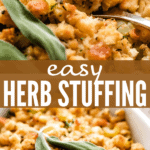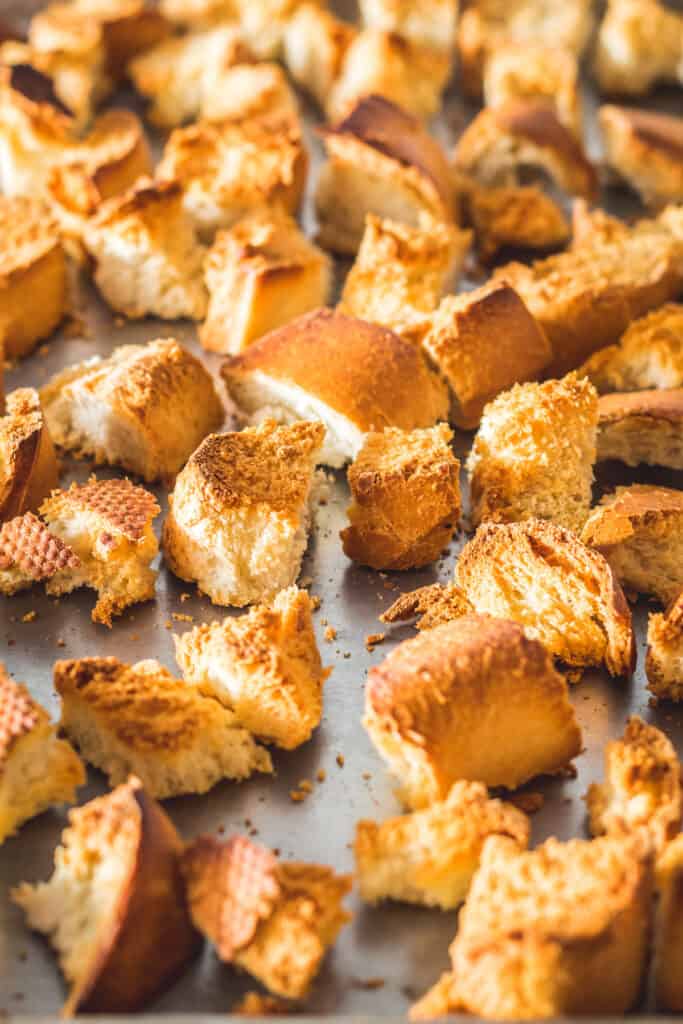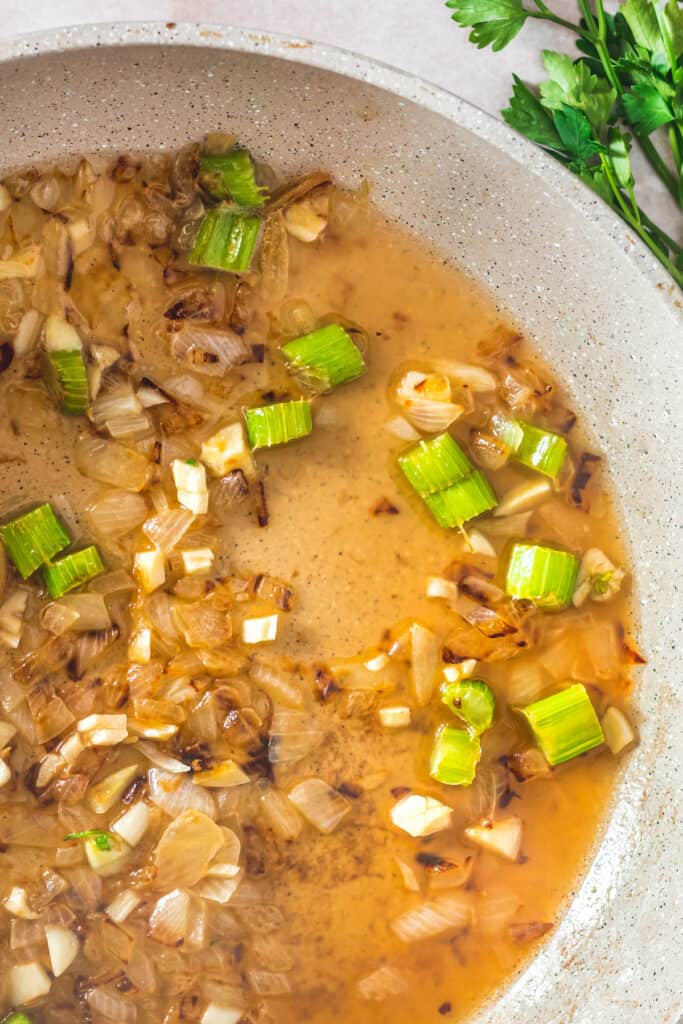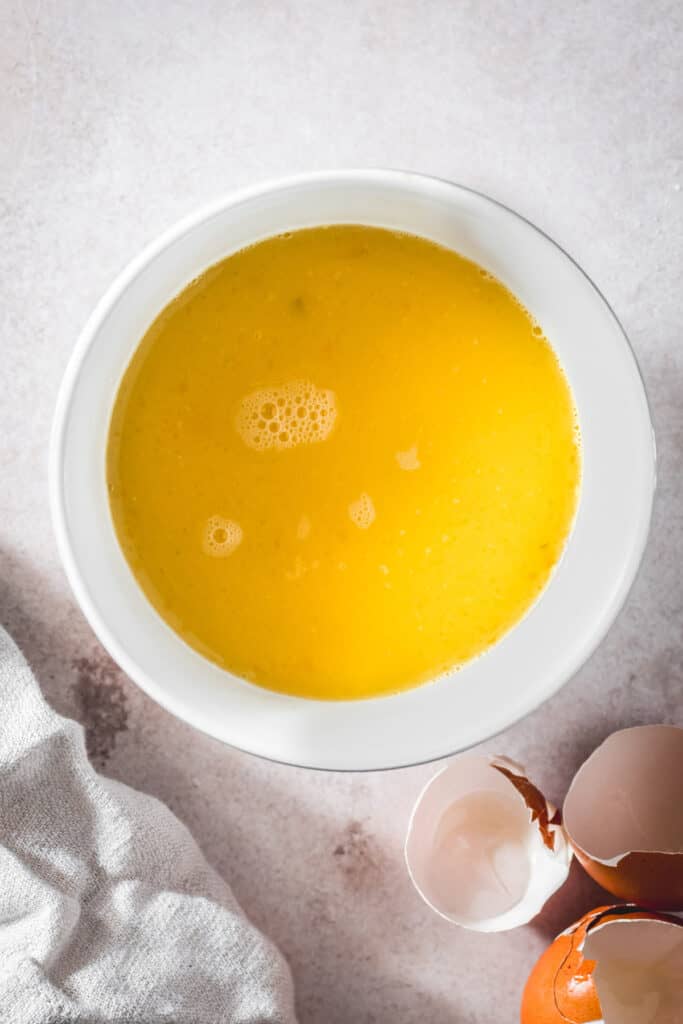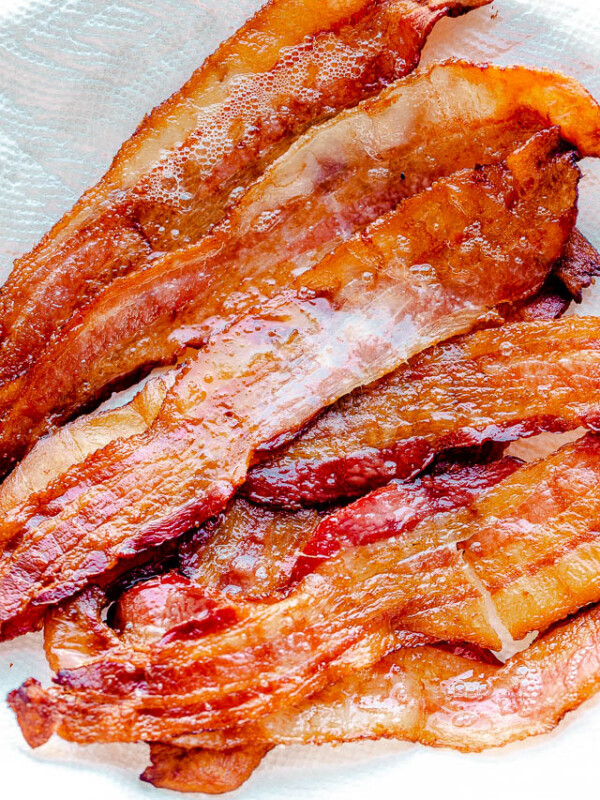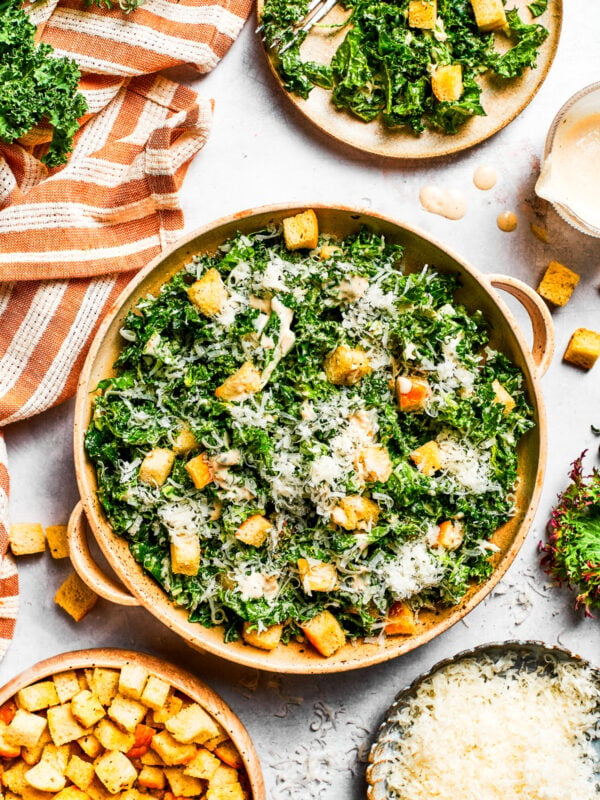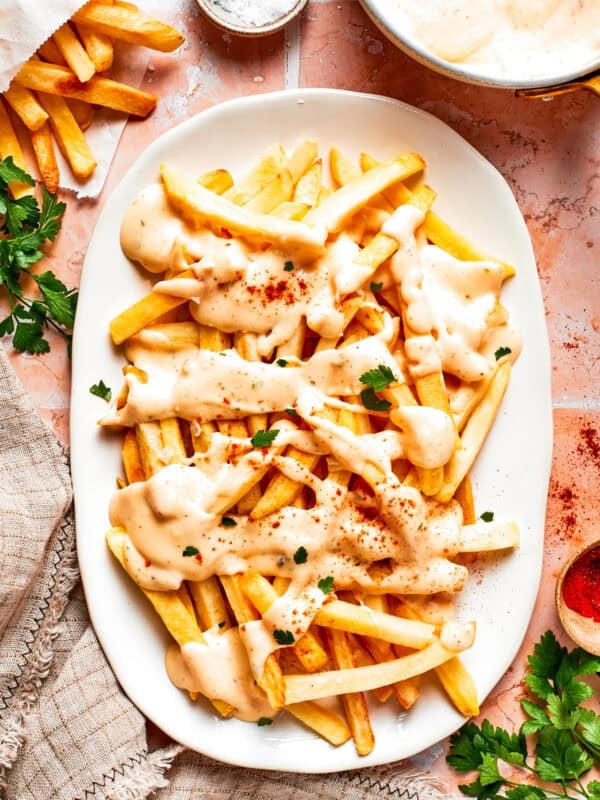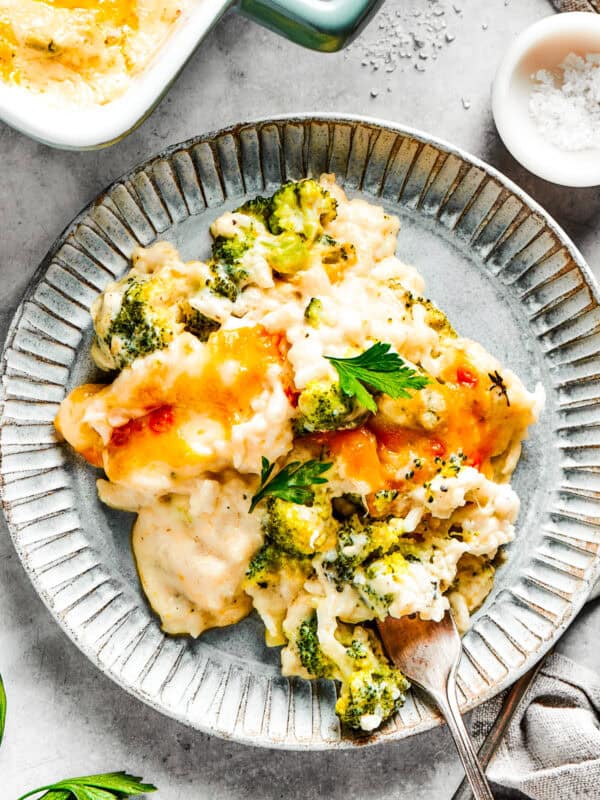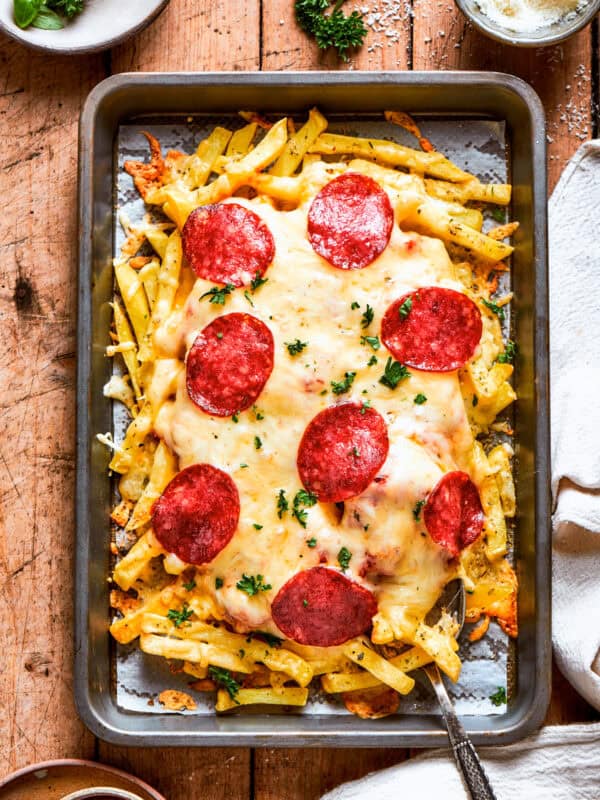This post may contain affiliate links. Please read our disclosure policy.
Toasted French bread forms the base of this Easy Herb Stuffing, made with real butter, fresh herbs, tender veggies, and wine. It’s an easy holiday favorite that the whole family will devour!
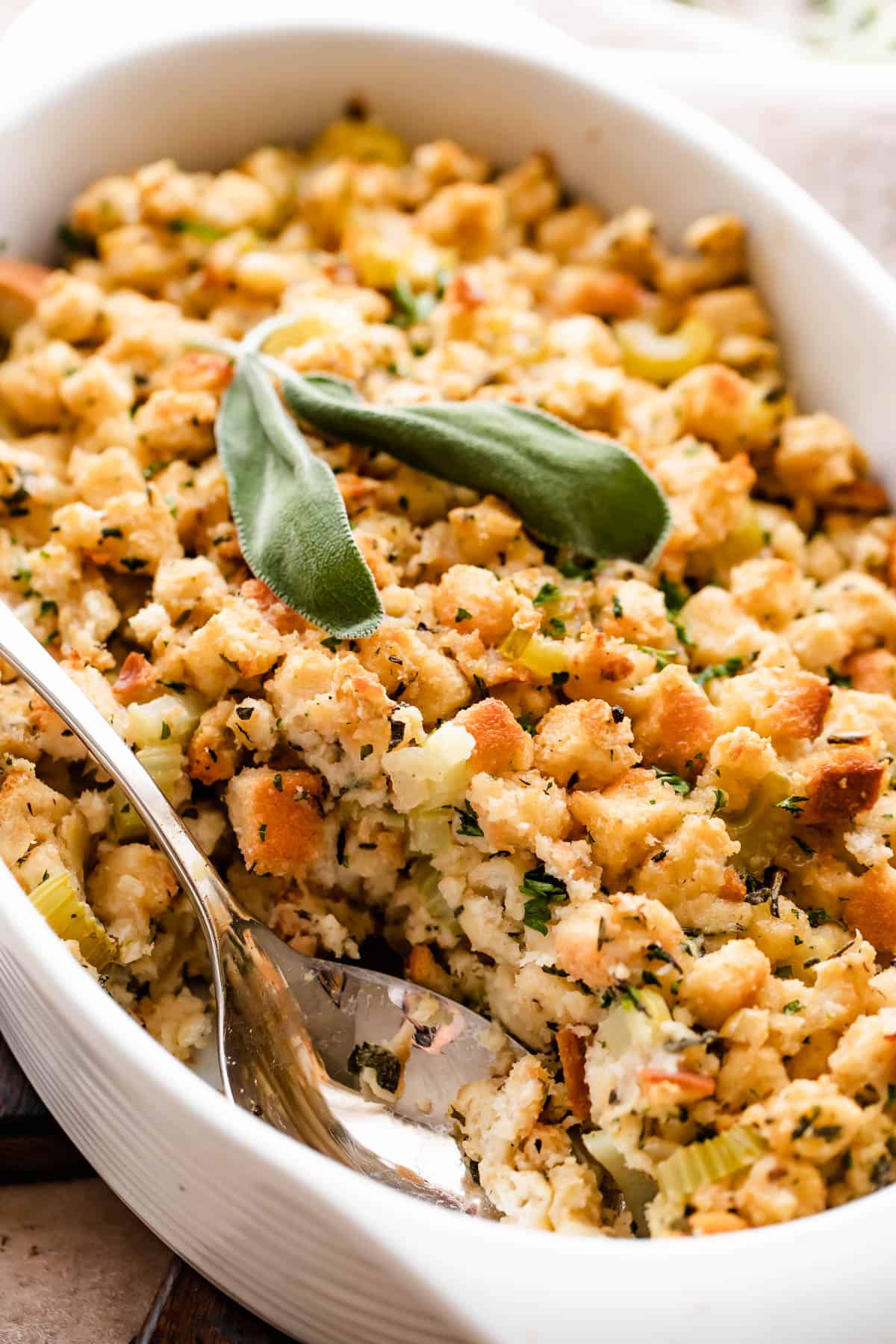
Jump To
- Classic Holiday Stuffing with Butter and Herbs
- What Is the Difference Between Dressing and Stuffing?
- The Ingredients
- How to Make Homemade Stuffing
- Tips for Perfect Stuffing, Every Time
- Make It In Advance
- What to Do with Leftover Stuffing
- Storing and Reheating Leftovers
- Easy Herb Stuffing Recipe
- More Easy Holiday Side Dishes
Classic Holiday Stuffing with Butter and Herbs
Are you a side dish expert? A casserole connoisseur? An aficionado of all things starch, veg, and herb? Then you are going to love this easy recipe for baked stuffing, made with toasted French bread, fresh herbs, onions, celery, and broth.
This buttery side dish is baked in a casserole, rather than inside your goose or turkey, so that you don’t risk underdone stuffing (no salmonella, thanks!) or overdone meat (poultry tends to give up its juices to the stuffing).
A hint of garlic and a little white wine elevates the dish, adding a little Julia Child-esque French flair to the American classic. A couple of whole eggs help bring it all together, and add a pleasant eggy richness and flavor.
What Is the Difference Between Dressing and Stuffing?
Depending on where you are, you may find yourself calling this timeless dish dressing, stuffing, or some other name. Is there a difference? Not really. The combination of savory bread (or cornbread, or rice) with broth and veggies is used to “dress” the main dish, usually turkey or goose, whether it’s “stuffed” inside, or made as a separate dish.
Technically, if you stuff the bird, it’s supposed to be called stuffing, and if you cook it separately, it’s dressing… but you’ll find that many people disagree with those rules. Including me! I usually call this dish “stuffing,” but I bake it on the side.

The Ingredients
Just what goes into a pan of stuffing? It depends! There are lots of variations out there, and I have included some ideas in the Tips section for customizing this recipe. The basic recipe, though, is super simple! Here are the ingredients you’ll need:
- Bread: My preferred bread for this recipe is white French bread. Dice it up into bite-sized cubes.
- Butter: To control the amount of salt in the recipe, I recommend using unsalted butter.
- Onion: No stuffing is complete without diced onion. Yellow is fine, or you can use white or sweet onions.
- Celery: Chopped celery is another must-have. Cut each rib in half, and then chop it up into small pieces.
- Garlic: Not all stuffing recipes call for fresh garlic, but I think it adds a mouthwatering flavor. Mince or press four cloves, or leave it out if you prefer.
- Salt and Pepper
- Wine: A little dry white wine adds a beautiful depth of flavor, and cuts the richness of the dish.
- Herbs: Parsley, sage, rosemary, and thyme. Hmmm, isn’t that a song? Anyway, go for fresh herbs, if you can, for the best flavor. Mince them up, leaves only.
- Broth: The bread needs to be moistened well with flavorful broth before baking.
- Eggs: A couple of large, whole eggs bind the mixture together.
How to Make Homemade Stuffing
If you’ve never made your own stuffing from scratch before, no worries! This recipe is super simple. It’s basically a mix-and-bake casserole dish that’s very forgiving!
- Toast the Bread Cubes. First, preheat your oven to 350°F. While it is heating, spread out the bread cubes in a single layer on a sheet pan. Once the oven is hot, bake the bread for 10 minutes, or until the cubes are dry and toasted. Place them in a large bowl, and set aside. Do not turn off the oven.
- Cook the Veggies. Melt 2 tablespoons of the butter in a large pan over medium-high heat. Add the onion and celery, and cook until the vegetables are soft and just beginning to turn golden. Then add the garlic, salt, and pepper, and cook for few more minutes. Finish with the wine, cooking the mixture until the liquid is reduced by half.
- Make the Stuffing Mixture. Pour the veggie mixture into the bowl with the bread cubes. Sprinkle in the parsley, sage, rosemary, and thyme, and pour in half of the chicken broth. Toss to combine. Then, in a small bowl, whisk the eggs with the remaining cup of chicken broth, and pour this over the bread mixture. Toss to combine one more time.
- Bake. Pour the stuffing mixture into a greased baking dish. Dice up the remaining butter into small pieces, and scatter them over the top. Bake for 35 to 40 minutes, or until browned and heated through.
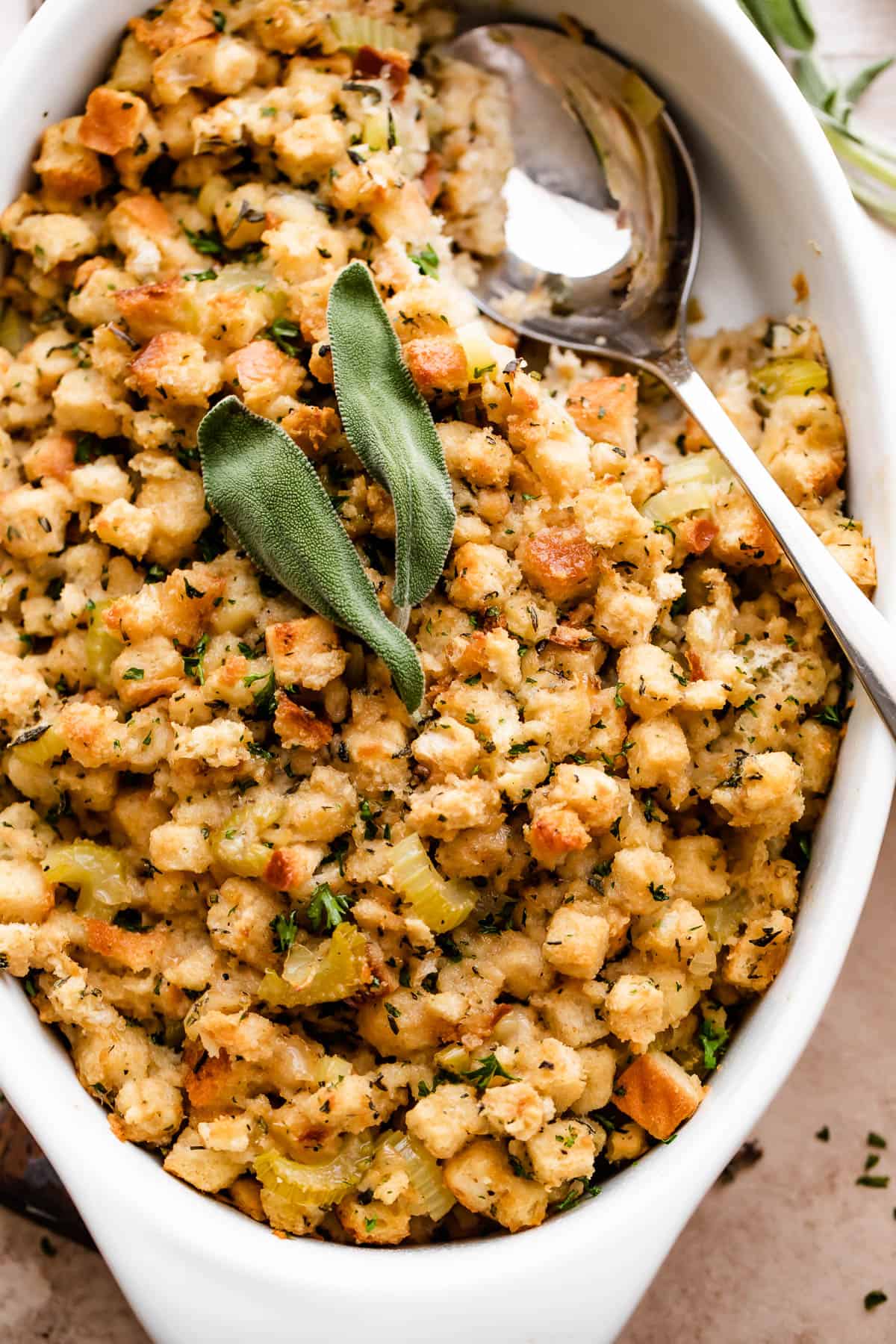
Tips for Perfect Stuffing, Every Time
So that’s it! The best stuffing recipe, made easily with basic pantry ingredients. But before you start cooking, take a quick look at these helpful tips!
- Bread Substitutions: You can use just about any kind of bread you like, as long as it’s dried and toasted. Using half regular bread and half cornbread is great, too.
- Broth Substitution: Feel free to substitute turkey broth for the chicken broth.
- Add Protein: Make your stuffing even more flavorful with the addition of crisply-cooked bacon or sausage. Sage or fennel sausage is especially perfect for a fragrant, classic taste.
- Make It Vegan: You can definitely make this stuffing vegetarian by using veggie broth, or go further and make a vegan recipe with your favorite egg substitute and plant-based butter.
- Pretty Presentation: Try baking your stuffing in muffin tins to make individual servings! You can also “stuff” the turkey after it is baked for a classic presentation without the risk of salmonella or dry turkey.

Make It In Advance
- You can assemble the stuffing one day in advance, and refrigerate it (cover it tightly!) until ready to bake.
- Take it out of the fridge 30 minutes before baking, so it can come to room temperature.
- Bake per recipe’s instructions.
What to Do with Leftover Stuffing
I love eating leftover stuffing reheated, with turkey and cranberry sauce on the side. 🍴 Or just a big bowl of it microwaved at midnight and scarfed down in the kitchen. Real talk. 🤤
But you can also turn your leftovers into a whole new dish, if you prefer! Here are a few great ideas:
- Waffles: Break out the waffle maker and turn that stuffing into a savory breakfast option! Whisk one egg for every two cups of stuffing, along with a splash of milk or broth. Stir into the stuffing, and spread in a thin, even layer on the waffle iron. Cook until golden and heated through.
- Sandwiches: A few spoonful of stuffing make your leftover turkey sandwich even more yummy! Bonus points if you add cranberry sauce or gravy.
- Meatballs/Meatloaf: Substitute stuffing for some or all of the breadcrumbs in your favorite meatloaf recipe. Yum!
- Hash: A stuffing-based skillet hash is great for breakfast, lunch, or dinner. Just sauté a diced potato or two over medium heat until softened. Add your stuffing, diced turkey, and some butter. Sauté until heated through. Season as needed, and top with fried eggs.
Storing and Reheating Leftovers
- Refrigerate leftover stuffing in airtight containers or zip-top bags for up to two days.
- Freeze leftover stuffing in freezer bags or airtight containers for up to two months. Thaw overnight in the fridge before reheating.
- Reheat leftover stuffing in the microwave for a minute at a time, until heated through. You can also bake leftover stuffing at 350°F until heated through.

Easy Herb Stuffing
Ingredients
- 1 whole loaf (1 pound) white French bread,, diced
- ¼ cup unsalted butter plus 2 tablespoons
- 1 large yellow onion,, diced
- ½ cup celery,, chopped
- 4 cloves garlic,, minced
- 1 teaspoon salt
- 1 teaspoon black pepper
- ½ cup dry white wine
- ½ cup flat leaf parsley,, minced
- 2 tablespoons fresh sage leaves,, minced
- 2 tablespoons fresh rosemary,, leaves only, minced
- 2 tablespoons fresh thyme,, leaves only, minced
- 2 cups chicken broth
- 2 large eggs
Instructions
- Preheat the oven to 350°F.
- Place the bread cubes in a single layer on a sheet pan and bake for 10 minutes, or until dry and toasted. Transfer the bread cubes to a large bowl, and set aside.
- In a large saute pan, heat 2 tablespoons butter over medium-high heat until melted. Add the onion and celery, and cook until the vegetables have softened and begun to lightly brown, about 7 to 8 minutes.
- Add the garlic, salt, and pepper to the vegetables. Saute for 4 more minutes.
- Add the wine, and allow it to cook until reduced by half, about 5 more minutes.
- Remove the vegetable mixture from the heat. Transfer it to the bowl with the bread cubes. Add the parsley, sage, rosemary, and thyme, along with 1 cup of the chicken broth. Toss well to combine, and set aside.
- In a small bowl, whisk together the eggs with the remaining 1 cup of chicken broth. Pour this over the bread mixture, and toss well to combine.
- Transfer the mixture to the prepared baking dish. Dice the ¼ cup of butter into small pieces, and sprinkle the pieces over the top of the bread mixture.
- Bake for 40 minutes, or until browned on top and hot in the middle. Serve warm.
Nutrition
Nutritional info is an estimate and provided as courtesy. Values may vary according to the ingredients and tools used. Please use your preferred nutritional calculator for more detailed info.
